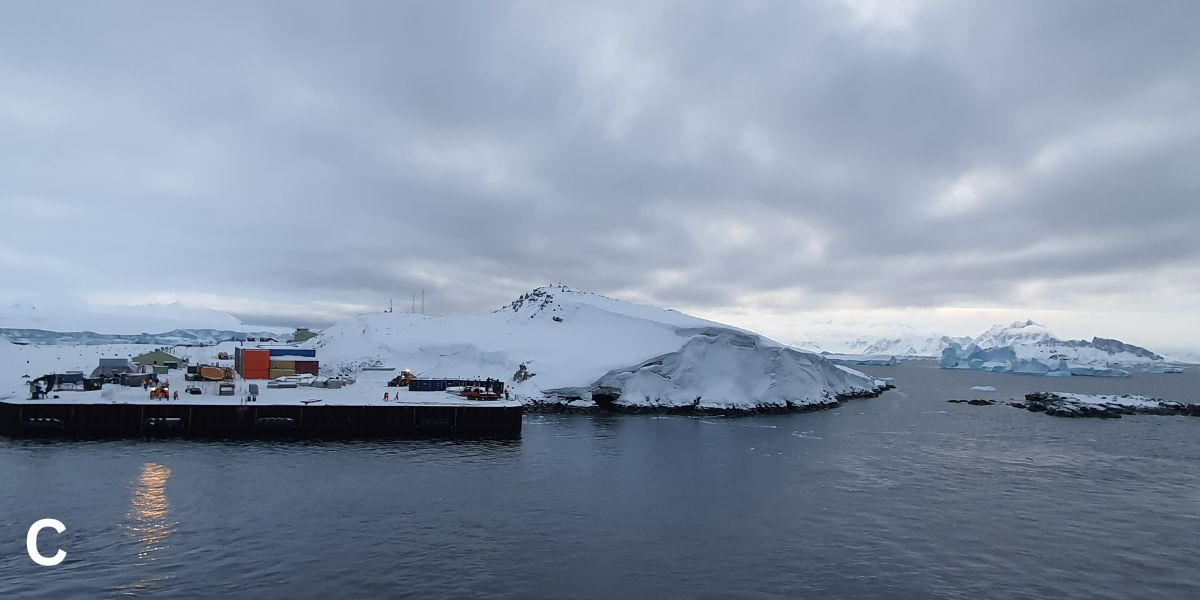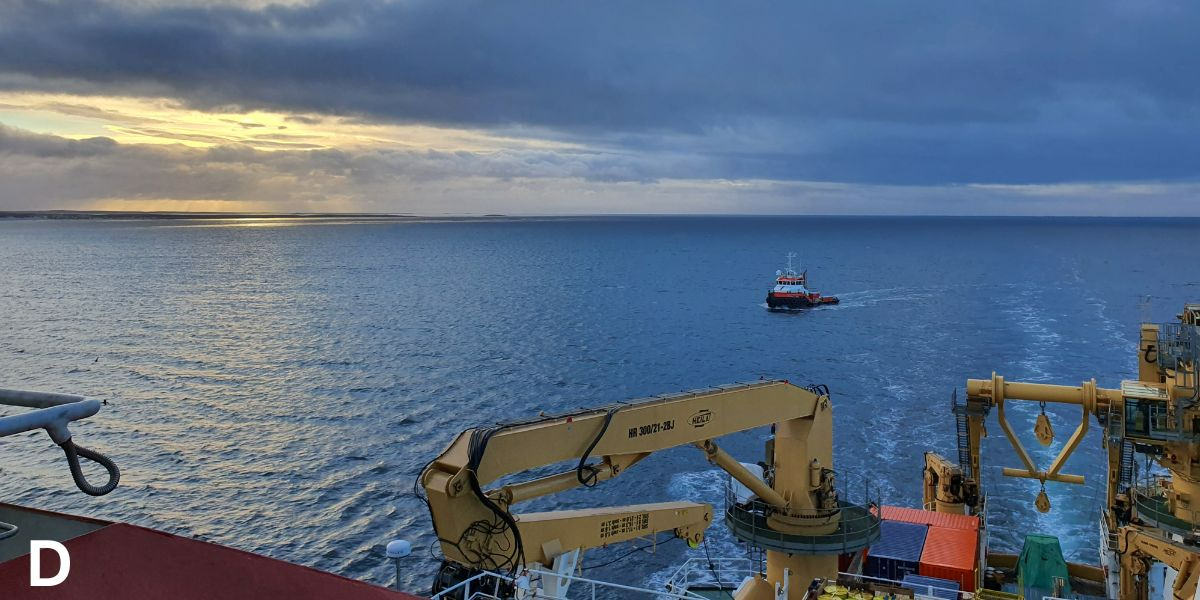Studying Microbial Community Interactions in the Coastal Southern Ocean (Part 1)
February 2023, by Swan LS Sow

22nd Jan 2022, Saturday – Start of Journey to Rothera Research Station
The journey began with Julia sending off field scientists Swan and Dina at Schiphol Airport, who were on their way to the RAF Brize Norton airport outside of London.
From Brize Norton, we took a flight to Falkland Islands, where we had to quarantine for two weeks before transiting to the final destination, Rothera Research Station (RRS) of the British Antarctic Survey (BAS). RRS also houses the Dutch-NWO Dirck-Gerritz labs.

11th Feb 2022, Friday – Arrival at RRS
After clearing the quarantine requirements, we arrived at RRS. The first week was dedicated to arrival trainings to familiarize with the station and safety protocols, as well as setting up our sample processing stations in the Dirck Gerritz labs.

18th February 2022, Friday – First RaTS Sampling Campaign
After passing the required training modules, settling in and setting up our workspaces, we set off onboard the Erebus rigid inflatable boat (RIB) on our first sampling campaign to site #1 of the Rothera Time Series (RaTS) sampling program. CTD measurements, and samples for nutrient measurements and microbial genomics profiling are collected from the surface, chlorophyll maximum and deepest point of the water column (~500 m). Samples for trace metal profiling were also collected from surface waters. RaTS samples are collected twice a week during the summer season, subject to good weather conditions.



We also sampled daily from the RRS wharf, and conducted a 48h time series profiling, where CTD measurements and surface water is sampled every hour for a period of 48 hours. . The high resolution, hourly sampling was conducted to establish a high-resolution microbial community profile which will allow us to study the changes in microbial interactions throughout their day-night cycle.

The WISE Expedition to West Antarctic Peninsula | Studying Microbial Community Interactions in the Coastal Southern Ocean (Part 2)
15th March 2022 - Post from Rothera
After several months away from home with very limited internet connectivity at Rothera station and no possibility to make video calls to family and friends, we were all starting to feel a little bit home sick. Luckily, we were able to send some beautiful postcards and hand-written letters back home through Rothera’s very own post office! All post was carried back to the Falkland Islands by the BAS’s Dash 7 planes which ferry passengers and cargo back and forth during the summer season.

(L) The British Antarctic Territory post office; (R) sending off a postcard from Rothera, picturing a field trainee hiking down a crevice near the Rothera Research Station.
20th March – 15th April 2022 - Microbial incubations and DNA sequencing in the Dirck-Gerritz and Bonner laboratories
Parallel to the ongoing sampling campaigns for the RaTS and Rothera harbour sampling, we set up and conducted microcosm incubation experiments to test the effects of seawater freshening on the Antarctic microbial community interactions.

(L) Daily measurement of sample temperature (R) microcosm incubation setup. Photos: Swan Sow
We had also started processing some of the samples – extracting microbial DNA from the genomics samples and performing marker gene polymerase chain reaction (PCR) on the microbial DNA in preparation for DNA sequencing with the long-read DNA sequencer.


(A) The Bonner molecular and microbiology laboratory; (B) an ongoing PCR run to amplify microbial marker gene DNA in preparation for sequencing; (C) lab bench with our DNA sequencer setup; (D) an ongoing sequencing run. Photos: Swan Sow
31st March 2022 – Winter is Coming
The days were getting shorter (>09:00 sunrise and 15:00 sunsets), and the last Dash 7 flight had departed. We were also experiencing more frequent strong winds and longer snowstorms, signalling that the summer sampling season was truly coming to an end. As the sampling campaigns wound down and most members of the summer season team that were keeping the station running had left, we had the chance to volunteer at different parts of the station to help keep the station running.



(A) The Bransfield house in the midst of a snowstorm (B) Snow piling up and blocking thoroughfare and entrances after many snowy days (C) postdoc Swan helping resident chef Olivier Hubert (BAS) prepare after dinner dessert for the station; (D) mise en place before baking up some (E) pound cake for the overwintering team to bring on their field training trips (F) Helping Jo Cole from the BAS meteorological team set up and launch the weather balloon of the day. Photos: Swan Sow
13th April 2022 – Last RaTS Sampling of the season
And before we know it, we were deploying the last CTD and Niskin bottles to collect the final samples of the season! It had been a successful sampling season overall despite many challenging weather days towards the end of summer.

A candid photo with Bonner laboratory manager Aurelia Reichardt (left) (BAS, left) and marine assistant Hollie London (BAS, center) on the Erebus before leaving the RaTS sampling site.

Rewarded with a beautiful sunset on our final sampling campaign.
20th April 2022 – Homeward bound
After spending about a week packing up the lab and arranging the northbound logistics of our samples and cargo, everything was loaded up onto the Sir David Attenborough (SDA) icebreaker, which was tasked with ferrying us and the cargo back to the UK via Falkland Islands.


Samples (A) and cargo (B) packed, ready for the journey home (C) The SDA being loaded up with cargo. Photos: Swan Sow
25th April 2022 – Farewell and till next time!
After a final walk around Rothera Point and saying farewell to the resident wildlife and overwintering team, we sailed north and crossed the Drake Passage towards Falkland Islands to catch our flight home. It’s been a great season Rothera, and see you again soon, hopefully!



(A) With the resident penguins on our final point walk; (B) view of the SDA from Rothera point, going through final checks before setting sail to Falklands the following morning; (C) Rothera wharf from onboard the SDA; (D) SDA arriving at Falkland Islands after a rough 5-day journey across the Drake passage.